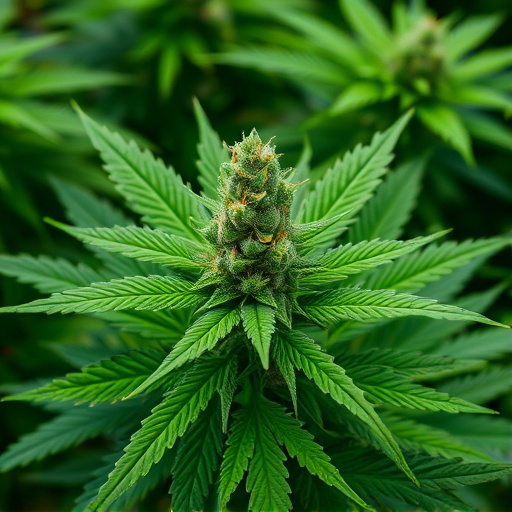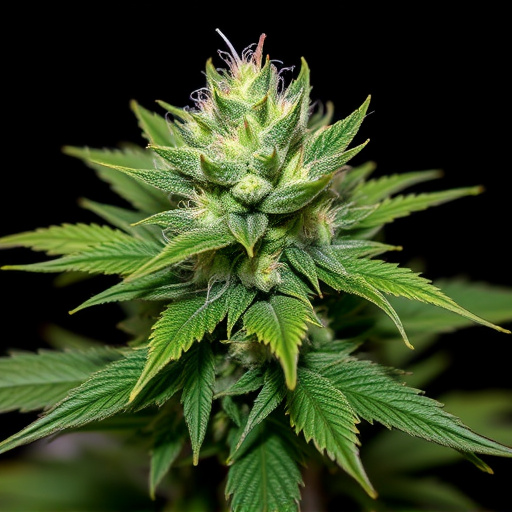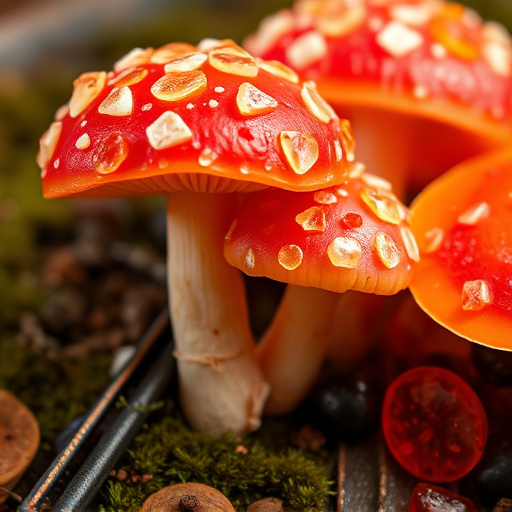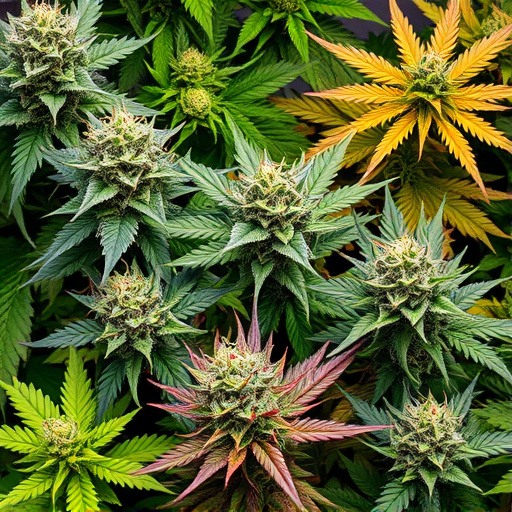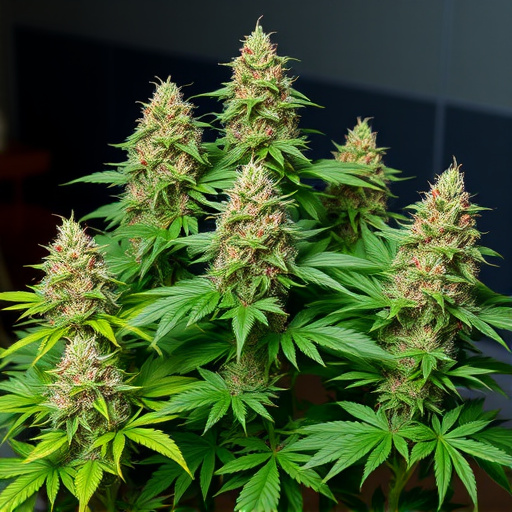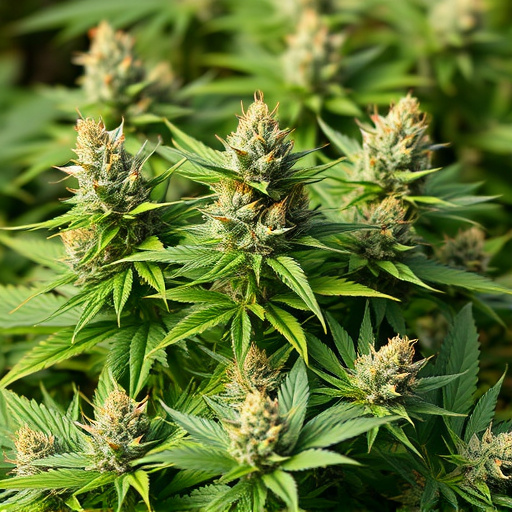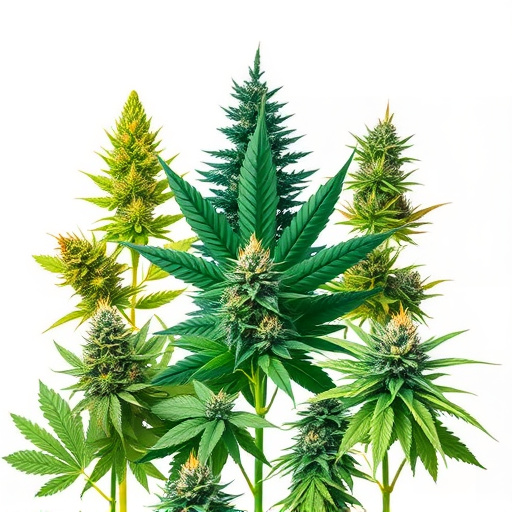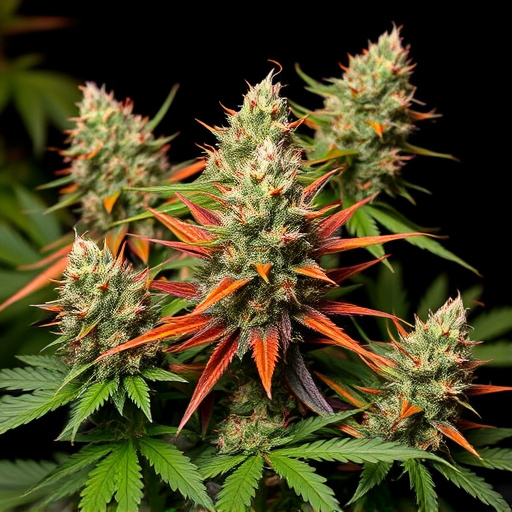Terpenes, aromatic compounds found in cannabis flowers, are key to the unique flavors and effects of different cannabis strains. Each terpene has a distinct profile, offering specific sensory experiences and physiological responses. For example, myrcene promotes relaxation, while linalool is known for its calming properties. The interaction between terpenes and cannabinoids amplifies cannabis effects, catering to individual preferences for relaxation, pain management, or mood enhancement. Terpene diversity allows growers to create a wide range of different cannabis strains tailored to diverse user needs, empowering consumers to make personalized choices based on specific terpene profiles for optimal therapeutic outcomes.
Terpenes, the aromatic compounds responsible for the distinct smells and flavors of cannabis flowers, play a crucial role in more than just sensory experience. These volatile molecules also contribute significantly to the therapeutic effects felt by users, with each terpene offering unique properties that can enhance or alter the overall effect of cannabis. The diversity of terpenes across different cannabis strains allows for a wide range of experiences, catering to specific preferences and desired outcomes, from relaxation to stimulation.
- The Role of Terpenes in Cannabis Flower Aromas and Effects
- How Terpene Diversity Contributes to Different Cannabis Strains
- Understanding Terpenes for Targeted Cannabis Therapy
The Role of Terpenes in Cannabis Flower Aromas and Effects

Terpenes, a diverse group of aromatic compounds, play a pivotal role in shaping the unique aromas and effects associated with cannabis flowers. These natural ingredients contribute significantly to the distinct flavors and experiences offered by various cannabis strains. Each terpene possesses its own chemical profile, evoking specific sensory impressions and triggering different physiological responses. For instance, myrcene is renowned for its earthy, musky scent and is often linked to inducement of relaxation and sleepiness, making it a sought-after component in evening or bedtime strains.
Linalool, with its floral and citrusy notes, is known to promote calming and anti-anxiety effects, earning its place in many therapeutic cannabis varieties. The interplay between terpenes and cannabinoids (like THC and CBD) further enhances the overall effect of different cannabis strains. This complex relationship contributes to the diverse experiences users may encounter, catering to individual preferences and desired outcomes whether for relaxation, pain management, or mood enhancement.
How Terpene Diversity Contributes to Different Cannabis Strains

The diversity of terpenes in cannabis flowers is a key factor that contributes to the unique characteristics and effects associated with different cannabis strains. Terpenes are aromatic compounds produced by many plants, including cannabis, and they play a significant role in shaping the flavour profile and medicinal properties of each strain. Each terpene has distinct chemical properties that can interact with cannabinoids like THC and CBD, leading to varied experiences for users.
In cannabis, different terpenes are linked to specific effects and sensory experiences. For instance, myrcene is known for its earthy and fruity notes, often associated with relaxing and sedative effects, while limonene offers a citrusy aroma and may provide uplifting and energizing sensations. Pinene has a pine-like scent and is believed to enhance cognitive function. This terpene diversity allows growers and breeders to develop an extensive range of different cannabis strains tailored to diverse user preferences and desired effects.
Understanding Terpenes for Targeted Cannabis Therapy
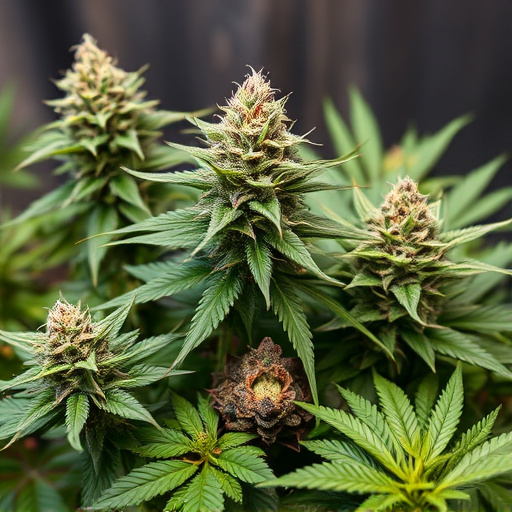
Terpenes, a diverse group of aromatic compounds, play a pivotal role in shaping the unique characteristics of different cannabis strains. Beyond their contribution to the distinct flavors and aromas we associate with specific varieties, terpenes have garnered significant attention for their potential therapeutic benefits. Each terpene possesses its own set of properties, offering targeted solutions for various conditions. For instance, myrcene, found abundantly in Indica strains, is known for its calming and relaxing effects, making it beneficial for managing stress and improving sleep quality. On the other hand, limonene, prevalent in Sativa strains, exhibits uplifting and energizing qualities, often sought after for mood enhancement and cognitive support.
Understanding the terpene profile of different cannabis strains allows consumers to make informed choices tailored to their specific needs. By aligning the right terpene composition with desired therapeutic outcomes, individuals can optimize their cannabis therapy. This targeted approach not only enhances the overall wellness experience but also underscores the importance of considering terpenes as integral components in navigating the complex world of cannabis treatments.
Terpenes play a pivotal role in shaping the unique aromas and effects of cannabis flowers, offering more than just sensory appeal. Their diversity is key to differentiating various cannabis strains, each with its own distinct therapeutic potential. By understanding terpenes, we can tailor cannabis therapy to specific needs, unlocking a world of possibilities for personalized treatment and enhancing our overall interaction with this remarkable plant.

